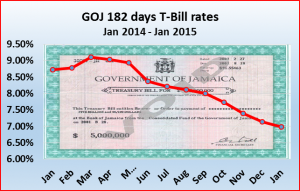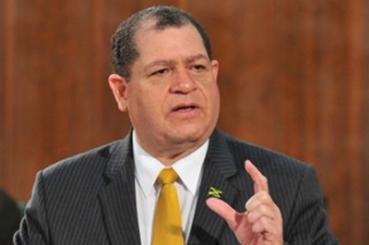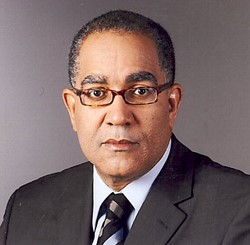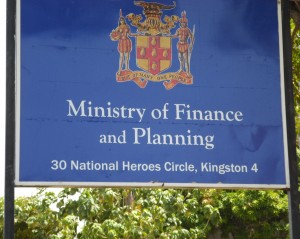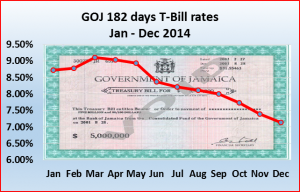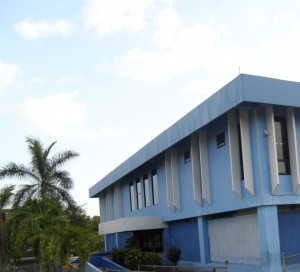 The Jamaican government is on track to achieve their primary surplus target with the December data showing only half a billion positive balance over the budgeted target level, but that is well down on $6.2 billion excess achieved for the period to November.
The Jamaican government is on track to achieve their primary surplus target with the December data showing only half a billion positive balance over the budgeted target level, but that is well down on $6.2 billion excess achieved for the period to November.
The primary surplus at the end of December comes out at $66.5 billion and is up from November’s surplus of $54.4 billion. The excess over forecast was achieved although revenues are off by $10 billion, or more than $3 billion worse than the $6.8 billion at the end of November. Tax revenues fell short by $9.7 billion to November as economic measures bite, but non tax revenue was better than forecast by $2 billion and grants were off by $3 billion.
Tax on interest brought in $1.5 billion in revenue over budget and was up by 39 percent, PAYE rose by 4 percent or $2 billion to $49.9 billion. The shortfalls were mostly local GCT down by $5.4 billion or 10.6 percent to $5.5 billion. Corporation tax fell short by $6.6 billion or 30 percent, Special consumption tax dropped $1.7 billion or 19 percent
The wage bill that was on target to November shows $1.76 billion in savings to December, as government spent $121 billion on this item, interest cost is down by $4.5 billion to $95 billion and other cost fell by $671 million. Capital expenditure, underspent by $7.4 billion to November is now $8.3 billion below forecast or 31 percent reduction.
The fiscal deficit targeted at $33.87 billion is down by $5 billion to $28.9 billion thanks to cut in scheduled payments.
Inflation drops in December
 The rate of inflation in Jamaica, fell in December last, the Statistical Institute of Jamaica (Statin) reported today. Statin reported that the rate for the last month of the year, registered a fall of 0.3 percent over November. In November, the rate declined by 0.5 percent.
The rate of inflation in Jamaica, fell in December last, the Statistical Institute of Jamaica (Statin) reported today. Statin reported that the rate for the last month of the year, registered a fall of 0.3 percent over November. In November, the rate declined by 0.5 percent.
The rate for the full year and the point-to-point inflation, each ended at 6.4 percent and compares with 6.4 percent for 2013 but is above the 6 percent achieved in 2011. The increase for 2014 is the second lowest on record, for the past seven years dating back to 2008.
The price movement in December was largely attributable to the “downward movement recorded in the index for the division ‘Food and Non-Alcoholic Beverages’, ‘Housing Water, Electricity, Gas and Other Fuels’ and ‘Transport’. The index for the division ‘Food & Non-Alcoholic Beverages’ declined by 0.6 percent, due mainly to lower prices for vegetables. Lower rates for water and sewage in addition to a reduction in the cost of electricity were key factors influencing the division ’Housing, Water, Electricity, gas and Other Fuels’, which moved down by 1.2 percent. A decrease of 0.4 percent was recorded for the division ‘’Transportation as a result of global reduction in oil prices” Statin said.
On the other hand price increases occurred in Alcoholic Beverages and Tobacco, Clothing and Footwear, Furnishings, Household Equipment and Routine Household Maintenance, Health, Recreation and Culture and Miscellaneous Goods and Services.
Jamaican economy fell 1.4% in Q3
Statin sated that the performance for the September quarter was negatively impacted by a 7.8 percent fall in the Goods Producing industries but the Service industries improved by 0.7 percent. When compared to the second quarter of 2014, output in the economy fell by 1.8 percent.
All industries within the Goods Producing industries, with the exception of Construction experienced lower levels of output. Reduced output was recorded in: Agriculture, Forestry & Fishing 22.8 percent, Manufacturing 5.6 percent and Mining & Quarrying 2 percent. The Construction industry grew by 1.6 percent.
“The weak performance in the Agriculture, Forestry & Fishing industry resulted from drought conditions experienced throughout the island. The decline in Manufacturing was mainly attributed to a 51.6 percent decline in petroleum refining. There was no production of petroleum products for two months of the review quarter as the refinery was closed for operational maintenance in August and September. Lower production in the Mining & Quarrying industry was due largely to a 3.2 percent fall in alumina production. However, crude bauxite production increased by 2.2 percent resulting from improved efficiency at the bauxite plant,” Statin said.
Increased output was recorded for all industries within the Services industries with the exception of Government Services, down 0.2 percent and Electricity & Water Supply, down 1.1 percent. Higher output levels were recorded for; Hotels & Restaurants 4.1 percent, Other Services 1.6 percent. Transport, Storage & Communication 1.1 percent, Real Estate, Renting & Business Activities 0.4 percent, Wholesale & Retail Trade; Repairs; Installation of Machinery & Equipment 0.3 percent and Finance & Insurance Services 0.2 percent.

